
Concept explainers
120. Current in an RC Circuit The equation governing the amount of current I (in amperes) after lime t (in microseconds) in a single RC circuit consisting of a resistance R (in ohms), a capacitance C (in microfarads), and an electromotive force E (in volts) is
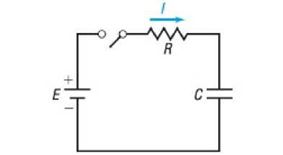
(a) If volts, ohms, and microfarad, how much current I1 is flowing initially ( )? After 1000 microseconds? After 3000 microseconds?
(b) What is the maximum current?
(c) Graph this function (t), measuring I along the and t along the .
(d) If volts, ohms, and microfarads, how much current I2 is flowing initially? After 1000 microseconds? After 3000 microseconds?
(e) What is the maximum current?
(f) Graph the function on the same coordinate axes as .
To find:
a. If volts, ohms and microfarads, how much current is flowing initially ? After microseconds? After microseconds?
Answer to Problem 114AYU
a. current is flowing initially , current is flowing after microseconds, current is flowing after microseconds.
Explanation of Solution
Given:
Calculation:
a. and
How much current is flowing initially
How much current is flowing after 1000 microseconds
How much current is flowing after 3000 microseconds
To find:
b. The maximum current.
Answer to Problem 114AYU
b. maximum current when time approaches zero.
Explanation of Solution
Given:
Calculation:
b. We obtain maximum current when time approaches zero
To find:
c. graph the function measuring along the and along the .
Answer to Problem 114AYU
c.
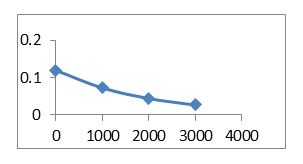
Explanation of Solution
Given:
Calculation:
c.
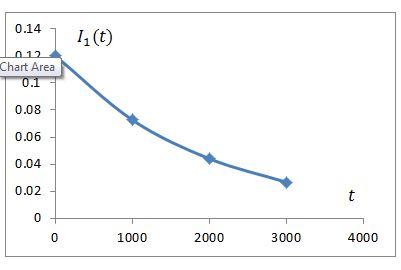
To find:
d. If volts, ohms, and henrys, microfarads, how much current is flowing initially After microseconds? After microseconds?
Answer to Problem 114AYU
d. current is flowing initially , current is flowing after microseconds, current is flowing after microseconds.
Explanation of Solution
Given:
Calculation:
d. and
How much current is flowing initially
How much current is flowing after 1000 microseconds
How much current is flowing after 3000 microseconds
To find:
e. The maximum current.
Answer to Problem 114AYU
e. maximum current when time approaches zero.
Explanation of Solution
Given:
Calculation:
e. We obtain maximum current when time approaches zero
To find:
f. graph the function measuring along the and along the .
Answer to Problem 114AYU
f.
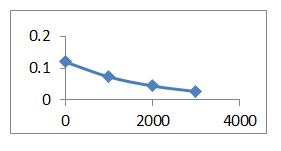
Explanation of Solution
Given:
Calculation:
f.
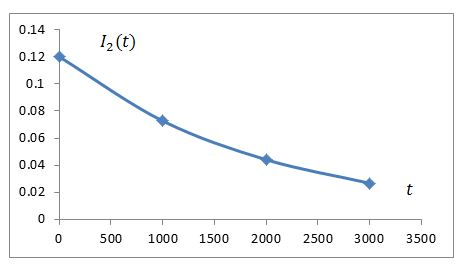
Chapter 5 Solutions
Precalculus
Additional Math Textbook Solutions
Elementary Statistics: Picturing the World (7th Edition)
Thinking Mathematically (6th Edition)
Elementary Statistics (13th Edition)
College Algebra (7th Edition)
Introductory Statistics
Basic Business Statistics, Student Value Edition
- Consider the function f(x) = x²-1. (a) Find the instantaneous rate of change of f(x) at x=1 using the definition of the derivative. Show all your steps clearly. (b) Sketch the graph of f(x) around x = 1. Draw the secant line passing through the points on the graph where x 1 and x-> 1+h (for a small positive value of h, illustrate conceptually). Then, draw the tangent line to the graph at x=1. Explain how the slope of the tangent line relates to the value you found in part (a). (c) In a few sentences, explain what the instantaneous rate of change of f(x) at x = 1 represents in the context of the graph of f(x). How does the rate of change of this function vary at different points?arrow_forward1. The graph of ƒ is given. Use the graph to evaluate each of the following values. If a value does not exist, state that fact. и (a) f'(-5) (b) f'(-3) (c) f'(0) (d) f'(5) 2. Find an equation of the tangent line to the graph of y = g(x) at x = 5 if g(5) = −3 and g'(5) = 4. - 3. If an equation of the tangent line to the graph of y = f(x) at the point where x 2 is y = 4x — 5, find ƒ(2) and f'(2).arrow_forwardDoes the series converge or divergearrow_forward
- Suppose that a particle moves along a straight line with velocity v (t) = 62t, where 0 < t <3 (v(t) in meters per second, t in seconds). Find the displacement d (t) at time t and the displacement up to t = 3. d(t) ds = ["v (s) da = { The displacement up to t = 3 is d(3)- meters.arrow_forwardLet f (x) = x², a 3, and b = = 4. Answer exactly. a. Find the average value fave of f between a and b. fave b. Find a point c where f (c) = fave. Enter only one of the possible values for c. c=arrow_forwardplease do Q3arrow_forward
- Use the properties of logarithms, given that In(2) = 0.6931 and In(3) = 1.0986, to approximate the logarithm. Use a calculator to confirm your approximations. (Round your answers to four decimal places.) (a) In(0.75) (b) In(24) (c) In(18) 1 (d) In ≈ 2 72arrow_forwardFind the indefinite integral. (Remember the constant of integration.) √tan(8x) tan(8x) sec²(8x) dxarrow_forwardFind the indefinite integral by making a change of variables. (Remember the constant of integration.) √(x+4) 4)√6-x dxarrow_forward
 Calculus: Early TranscendentalsCalculusISBN:9781285741550Author:James StewartPublisher:Cengage Learning
Calculus: Early TranscendentalsCalculusISBN:9781285741550Author:James StewartPublisher:Cengage Learning Thomas' Calculus (14th Edition)CalculusISBN:9780134438986Author:Joel R. Hass, Christopher E. Heil, Maurice D. WeirPublisher:PEARSON
Thomas' Calculus (14th Edition)CalculusISBN:9780134438986Author:Joel R. Hass, Christopher E. Heil, Maurice D. WeirPublisher:PEARSON Calculus: Early Transcendentals (3rd Edition)CalculusISBN:9780134763644Author:William L. Briggs, Lyle Cochran, Bernard Gillett, Eric SchulzPublisher:PEARSON
Calculus: Early Transcendentals (3rd Edition)CalculusISBN:9780134763644Author:William L. Briggs, Lyle Cochran, Bernard Gillett, Eric SchulzPublisher:PEARSON Calculus: Early TranscendentalsCalculusISBN:9781319050740Author:Jon Rogawski, Colin Adams, Robert FranzosaPublisher:W. H. Freeman
Calculus: Early TranscendentalsCalculusISBN:9781319050740Author:Jon Rogawski, Colin Adams, Robert FranzosaPublisher:W. H. Freeman
 Calculus: Early Transcendental FunctionsCalculusISBN:9781337552516Author:Ron Larson, Bruce H. EdwardsPublisher:Cengage Learning
Calculus: Early Transcendental FunctionsCalculusISBN:9781337552516Author:Ron Larson, Bruce H. EdwardsPublisher:Cengage Learning





